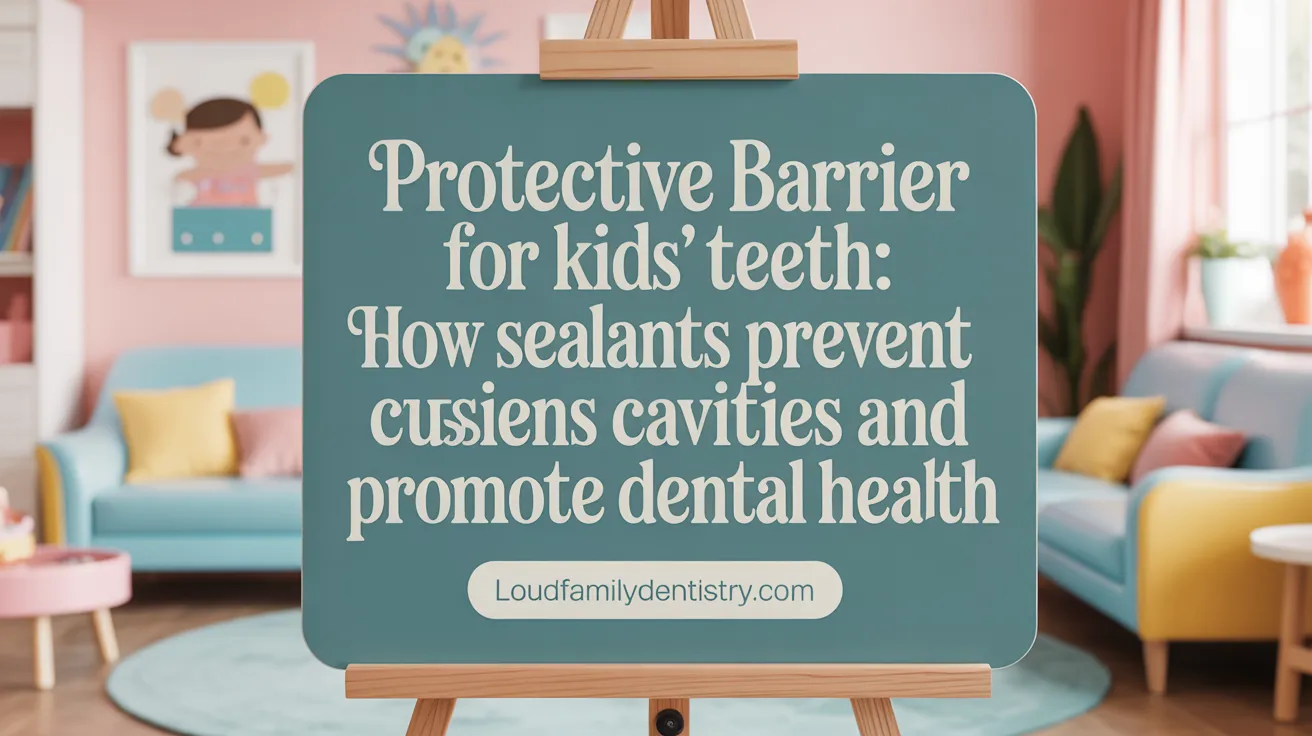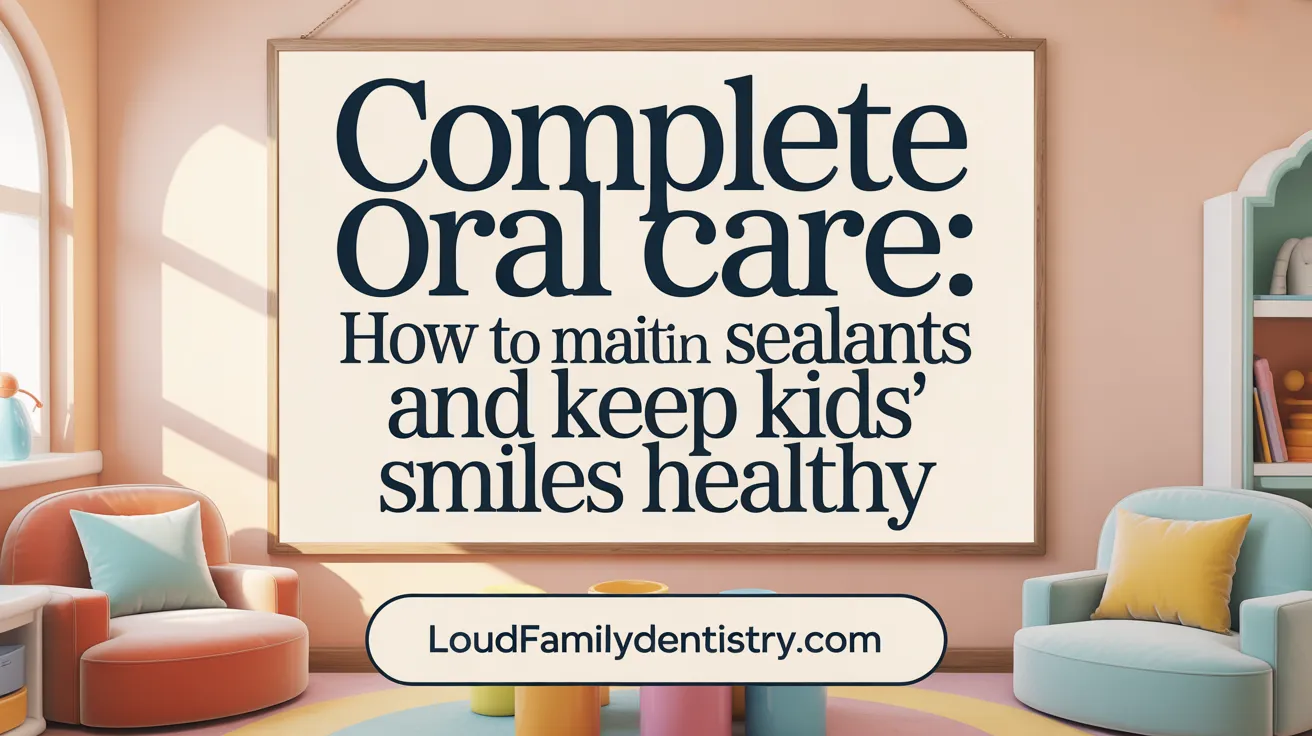Understanding Dental Sealants and Their Role in Children's Oral Health
Dental sealants have emerged as a highly effective preventive tool in pediatric dentistry, significantly reducing the risk of cavities in children’s teeth. This article explores how sealants protect children's teeth from decay by forming a protective barrier over vulnerable chewing surfaces. We will delve into their application process, safety, effectiveness, and maintenance, highlighting their importance in supporting long-term oral health for children from diverse backgrounds.
The Science Behind Dental Sealants: How They Protect Children’s Teeth

What are dental sealants and why are they so important for children's teeth?
Dental sealants are thin, plastic coatings applied to the chewing surfaces of molars and premolars. Their main purpose is to prevent cavities by creating a protective barrier over deep grooves, pits, and fissures of back teeth. Since these areas are often difficult to clean thoroughly, sealants help keep food particles, bacteria, and acids from settling into them.
How do sealants act as a shield against decay?
Sealants function as a physical barrier that blocks out germs, food debris, and acids. When applied, they bond tightly to the tooth enamel after curing with a special light, forming a smooth surface. This barrier prevents bacteria and food particles from entering the tiny grooves where decay often starts.
Which teeth are targeted for sealants and why?
Sealants are mainly applied on molars and premolars—teeth located at the back of the mouth. These teeth have deep pits and fissures that trap food and bacteria, making them more prone to cavities. Most children receive sealants on their first molars around age 6 and second molars around age 12, as these are most susceptible to decay during their cavity-prone years.
Why are children’s molars especially vulnerable?
Children’s molars are more prone to cavities because they erupt during years when oral hygiene habits are still developing. The deep grooves of these teeth can trap food and bacteria, and their rough surface is harder to clean. Applying sealants early, right after molars come in, significantly reduces the risk of decay during these vulnerable years.
How effective are dental sealants?
Research shows that sealants can block out bacteria and food from fissures, reducing the risk of cavities by up to 80% in the first two years after application. They continue to provide protection—around 50%—for up to four years. When properly maintained, sealants can last between five and ten years, making them a long-lasting, cost-effective preventive measure.
| Aspect | Details | Additional Info |
|---|---|---|
| Application process | Cleaning, etching, applying sealant, curing with light | Quick, painless, usually under 30 min |
| Materials used | Resin-based, BPA-free, sometimes contain fluoride | Safe for children, endorsed by dental associations |
| Duration of protection | Typically 5 to 10 years | Needs regular dental checkups |
| Common application age | Around ages 6 and 12, right after molars erupt | Also applicable to certain baby teeth |
| Benefits | Prevents up to 80% of cavities in molars | Reduces long-term dental costs |
Final thoughts
Dental sealants are a simple yet effective tool in protecting children's teeth from decay. By sealing the difficult-to-clean areas of molars early in life, they offer long-term benefits for oral health and reduce the need for costly dental treatments. Proper application, combined with good oral hygiene, can help ensure children keep their teeth healthy for years to come.
Effectiveness of Sealants: A Proven Strategy for Cavity Reduction

How effective are dental sealants in preventing tooth decay in children?
Dental sealants are a highly effective method for preventing tooth decay, especially on molars—the back teeth most susceptible to cavities. Studies show that sealants can prevent up to 80% of cavities in molars during the first two years after application. They work by creating a protective shield over deep grooves, preventing bacteria, food particles, and plaque from settling into these hard-to-clean areas.
Children without sealants are almost three times more likely to develop cavities in their molars compared to those with sealants. This significant difference underscores the importance of early preventive care. The application process is quick, painless, and involves cleaning the tooth, applying a gel, and sealing it with a curing light. The cost-effectiveness of sealants also plays a crucial role—by preventing cavities, they reduce the need for fillings and other invasive procedures, resulting in substantial savings in dental care expenses over time.
While sealants provide a protective benefit, they are most effective when applied early—soon after molars erupt at around ages 6 and 12. This early intervention helps in maintaining long-term dental health and reducing cavity-related complications. Overall, dental sealants are a proven, safe, and efficient tool for safeguarding children’s teeth against decay, promoting healthier smiles now and into the future.
Application and Safety: What Parents Should Know

What is the application process and safety considerations for dental sealants in children's oral health?
Applying dental sealants is a straightforward, quick, and painless process performed by dental professionals like dentists or hygienists. The procedure begins with thoroughly cleaning the child's teeth to remove plaque and debris. This is followed by applying a gel with an acidic component to etch the enamel, which helps the sealant bond securely to the tooth surface. After rinsing and drying the area, the sealant material—made from a plastic resin—is painted onto the grooves and pits of the molars and premolars.
Once in place, the sealant is hardened using a specialized curing light, a process that takes about a minute. This creates a solid barrier that shields the tooth from food particles, bacteria, and acids that cause cavities. The entire procedure typically takes less than 30 minutes per child, depending on the number of teeth treated.
In terms of safety, dental sealants are endorsed by respected dental associations such as the American Dental Association and the American Academy of Pediatric Dentistry. They are made from FDA-approved materials, primarily BPA-free plastics, which are considered safe for children. Concerns about BPA exposure from sealants are minimal, and modern formulations significantly reduce any risk. The procedure involves no drilling or injections, making it an entirely non-invasive and pain-free experience.
Post-application, children can eat immediately, although it is advisable to avoid sticky or hard foods for a few days to prolong the sealants' effectiveness. Regular dental check-ups are essential to monitor the condition of the sealants, reapply if necessary, and ensure ongoing cavity prevention.
Overall, dental sealants are a safe, effective, and efficient preventive measure to protect children's vulnerable molars from decay, helping to maintain long-term oral health with minimal discomfort or risk.
Longevity and Maintenance: Ensuring Lasting Protection

How long do dental sealants typically last, and what maintenance is recommended?
Dental sealants usually provide protection for 5 to 10 years, though their lifespan can vary depending on individual factors and care. Proper maintenance plays a crucial role in prolonging their effectiveness. Regular dental visits allow professionals to monitor the condition of the sealants, check for signs of wear or damage, and perform touch-ups or reapplications if necessary.
To support their durability, good oral hygiene is essential. Brushing twice daily with fluoride toothpaste and flossing helps prevent decay around the sealant edges. Avoiding hard, sticky foods can also reduce the risk of chipping or loosening the sealants.
Signs that sealants might be wearing out include chipping, cracking, loosening, or increased tooth sensitivity. If you notice any of these signs, visit your dentist promptly for assessment.
Reapplication might be needed every few years, especially if the original sealant has worn down or become damaged. Modern sealants are designed to bond strongly and last several years, but reapplication ensures continued cavity protection.
Dietary choices also influence sealant longevity. Limiting sugary or sticky foods can reduce bacteria and acid production, further protecting the sealants from deterioration.
In summary, maintaining excellent oral hygiene, regular dental check-ups, and being attentive to sealant condition are vital to maximizing their protective benefit over time.
Comprehensive Dental Care: Maximizing Benefits of Sealants in Children's Oral Health

What recommendations exist for maintaining dental sealants and overall dental care in children?
To ensure that dental sealants continue to protect children's teeth effectively, regular dental check-ups are crucial. During these visits, dental professionals can assess the condition of the sealants, reapply or repair them if they have worn or chipped.
Practicing good oral hygiene habits is essential. Children should brush their teeth twice daily with a soft-bristled toothbrush and fluoride toothpaste. Flossing daily helps remove debris from between teeth and under the gumline, complementing the sealant’s protective barrier.
It is also advisable for children to avoid eating sticky, hard, or chewy foods that could damage or dislodge the sealants. Applying sealants shortly after the eruption of permanent molars—typically around ages 6 and 12—provides the best defense against cavities, especially in deep grooved teeth.
A healthy diet low in sugary and acidic foods supports dental health. Consulting with a dentist about fluoride treatments can add an extra layer of protection, as fluoride helps strengthen enamel.
Parents should also take advantage of school-based dental programs that offer sealant applications, especially for children in underserved communities. Regular visits and communication with dental professionals help maintain ongoing protection and facilitate timely reapplication or repairs of sealants.
Overall, these practices help keep children's teeth healthy, reduce the risk of decay, and cut down on future dental costs by preventing expensive restorative procedures.
Protecting Smiles for Life
Dental sealants offer a safe, effective, and convenient way to protect children's teeth from decay, especially during the vulnerable years when permanent molars erupt. By forming a durable barrier over molars’ intricate chewing surfaces, sealants block out decay-causing bacteria and food particles that brushing alone may not reach. Their proven ability to reduce cavities by up to 80%, combined with a painless application and long-lasting protection, makes them an essential part of pediatric dental care. Maintaining sealants through regular dental visits, good oral hygiene, and sound dietary habits ensures sustained benefits that can save families significant dental costs over time. Ultimately, dental sealants empower children and parents alike to safeguard oral health and preserve bright, healthy smiles well into adulthood.
References
- About Dental Sealants | Oral Health - CDC
- Dental Sealants: Protecting Your Children's Teeth
- Dental Sealants: A simple step for big protection - School of Dentistry
- Why Choose Dental Sealants in Jacksonville Beach for Your Child?
- Dental sealants can protect your children's teeth
- Dental Sealants | Wenatchee Pediatric Dentistry
- Why Dental Sealants Play an Important Part in Protecting Your ...
- A Parent's Guide to Dental Sealants for Kids in North Dallas
